Digital
Calum de Fanti 3 Calum De Fanti Benjamin Walsham Monica Luu Cameron Loving Sanctuary
-
Tauira / Students
Calum De Fanti, Benjamin Walsham, Monica Luu, Cameron Loving -
Kaiako / Lecturers
Tammie Leong, Jocelyn Janon, Don Chooi, Jim Murray
-
School
Media Design School
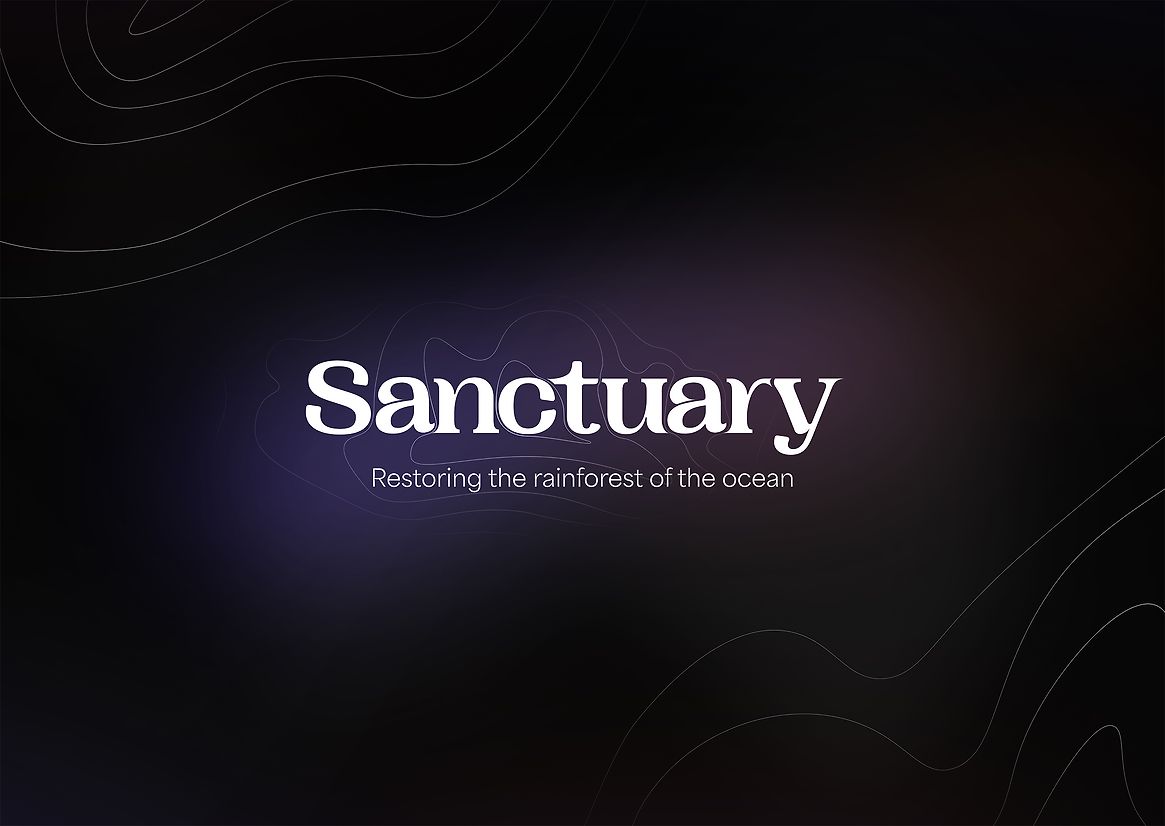
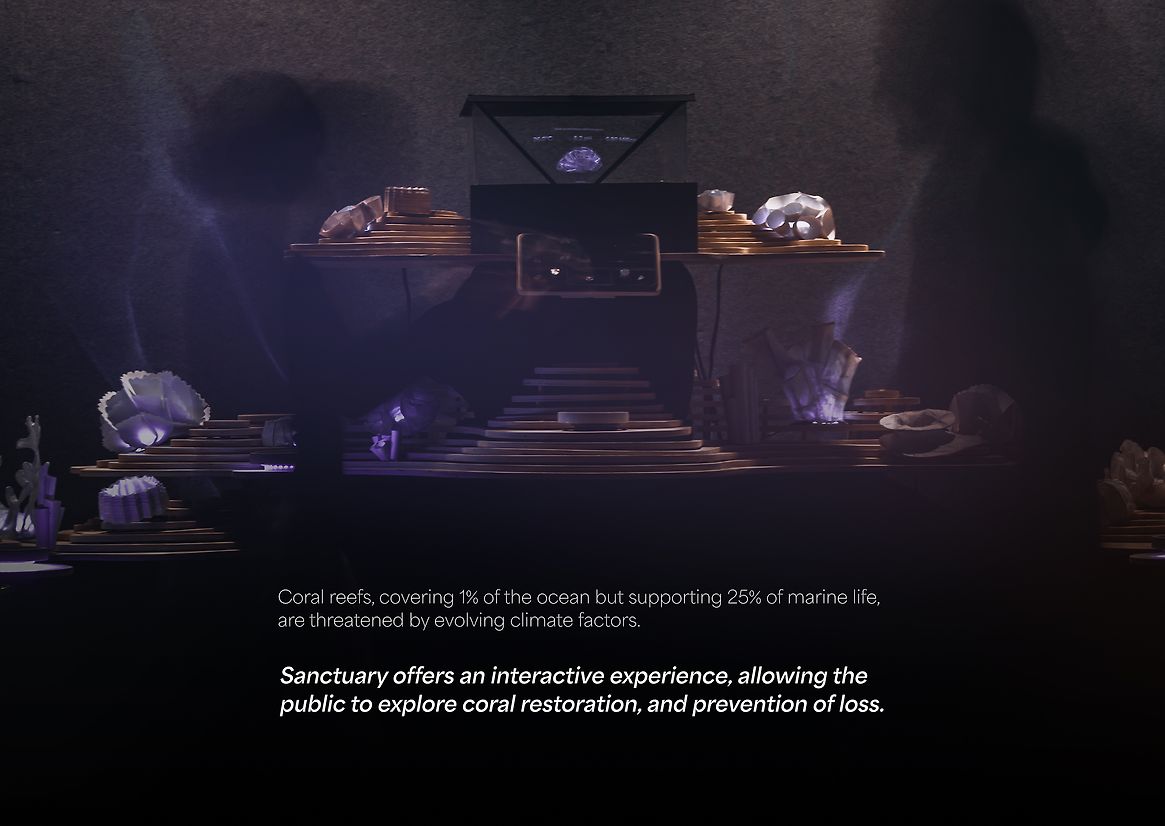
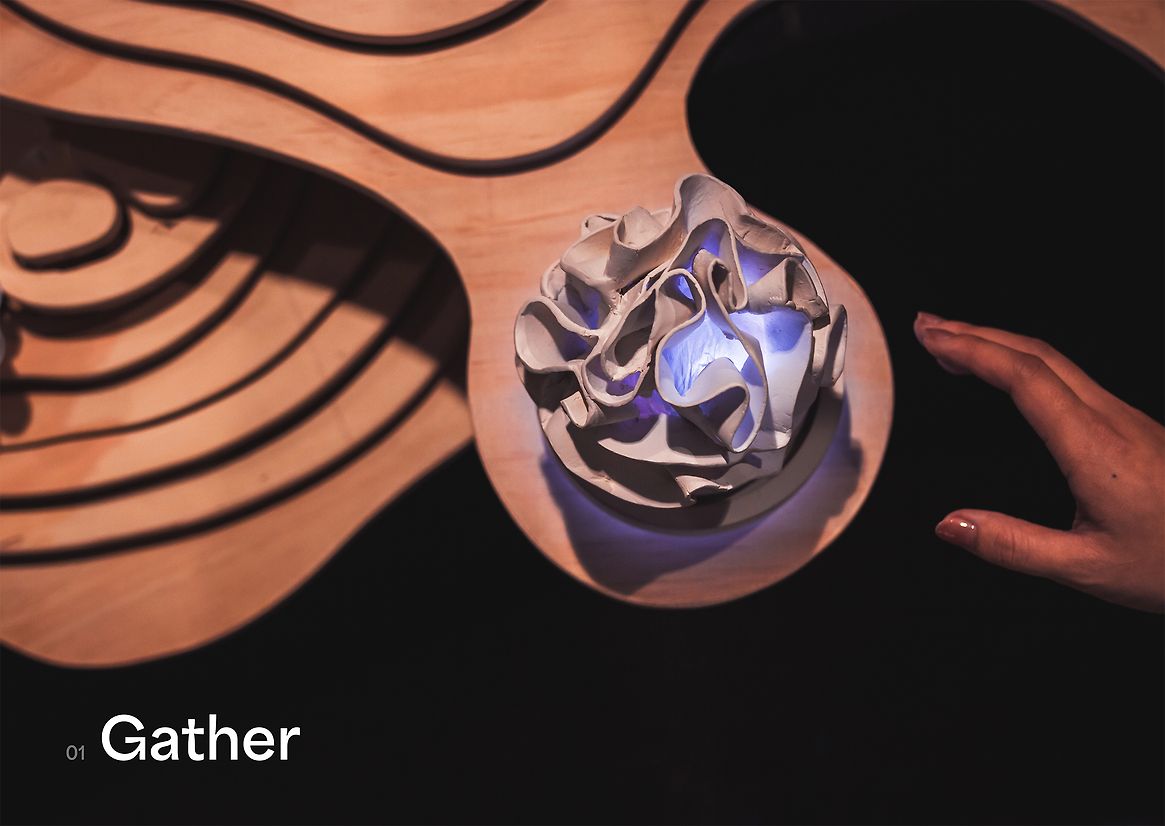
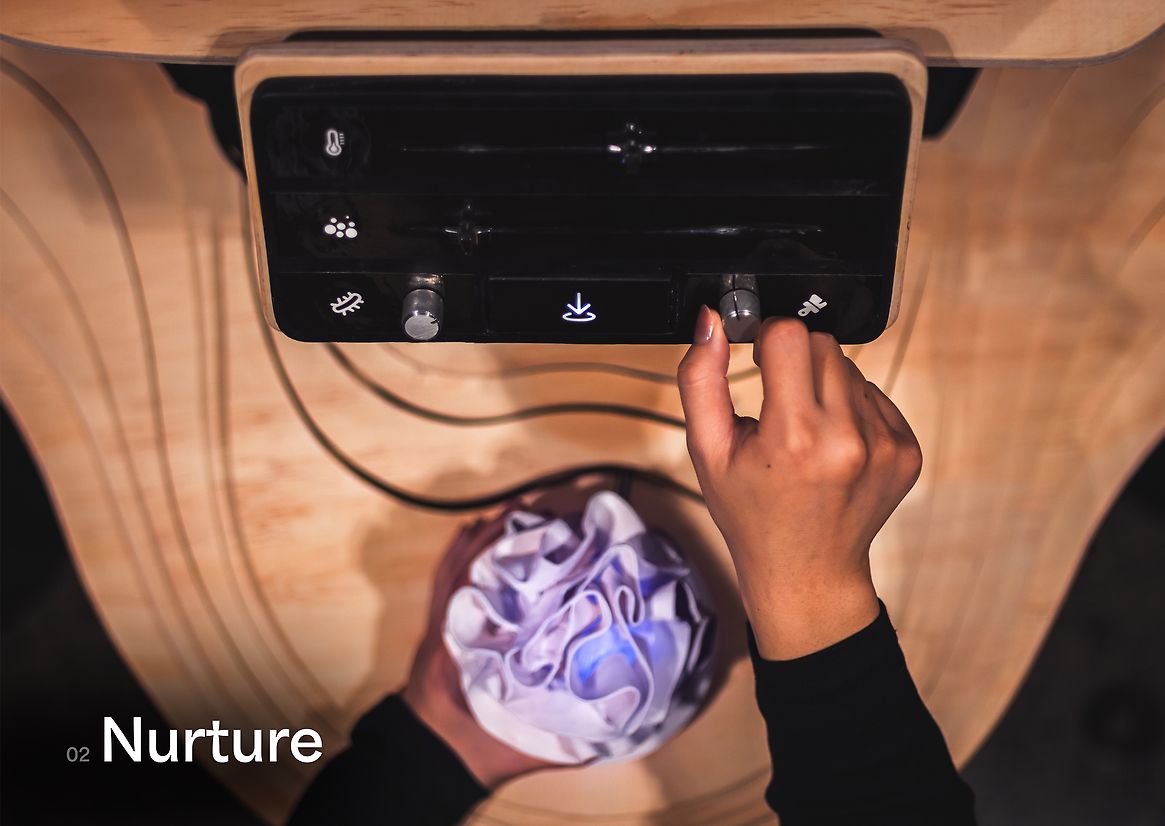
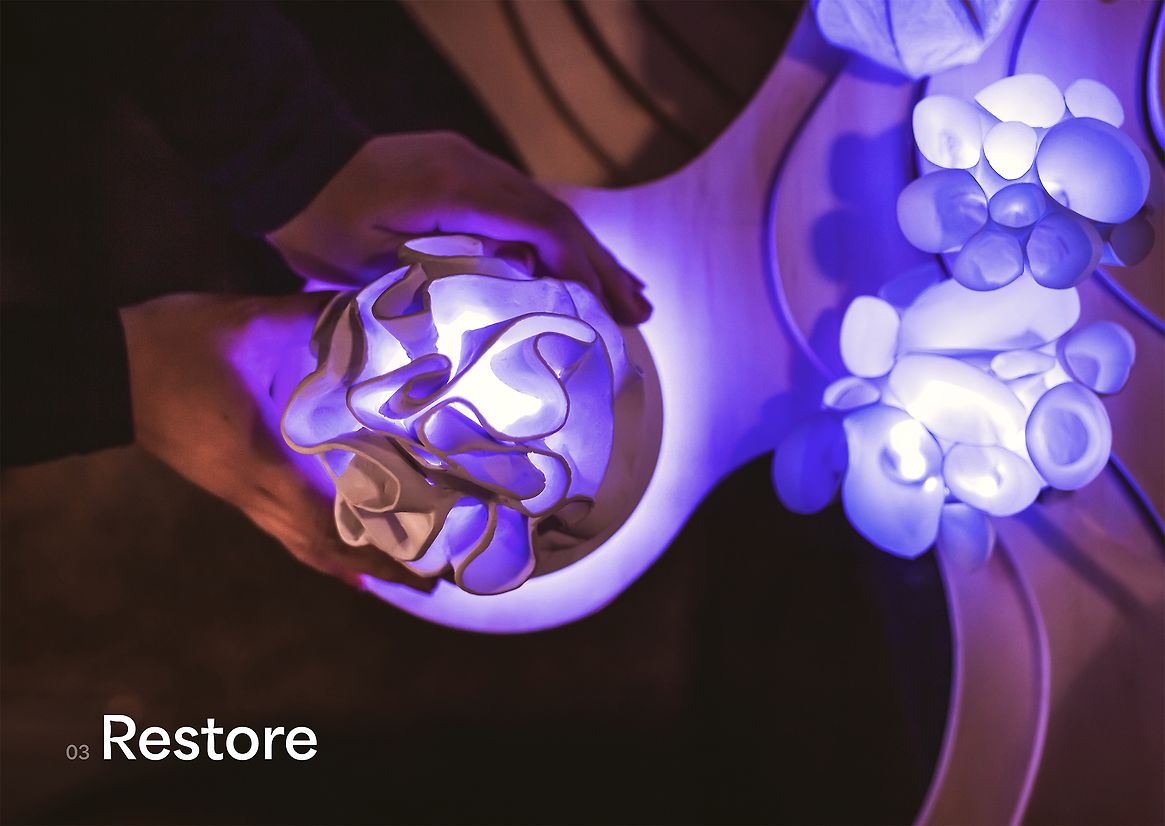
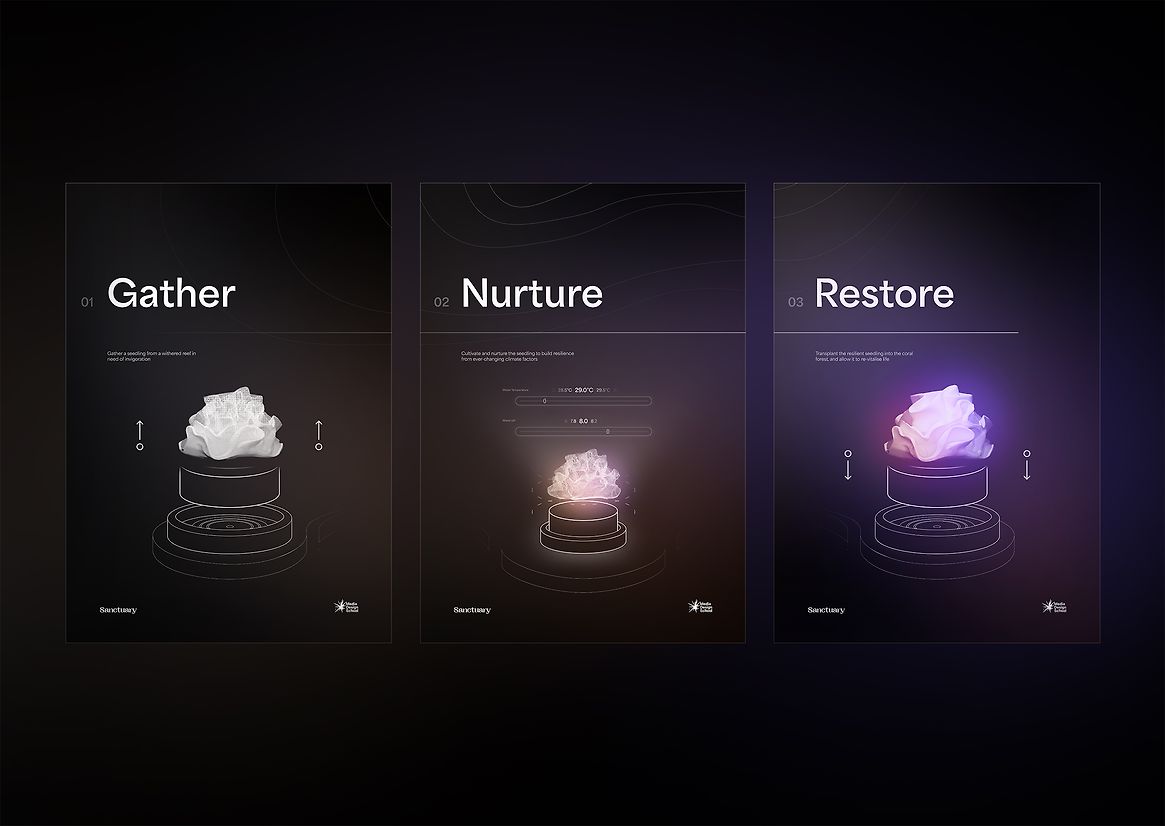
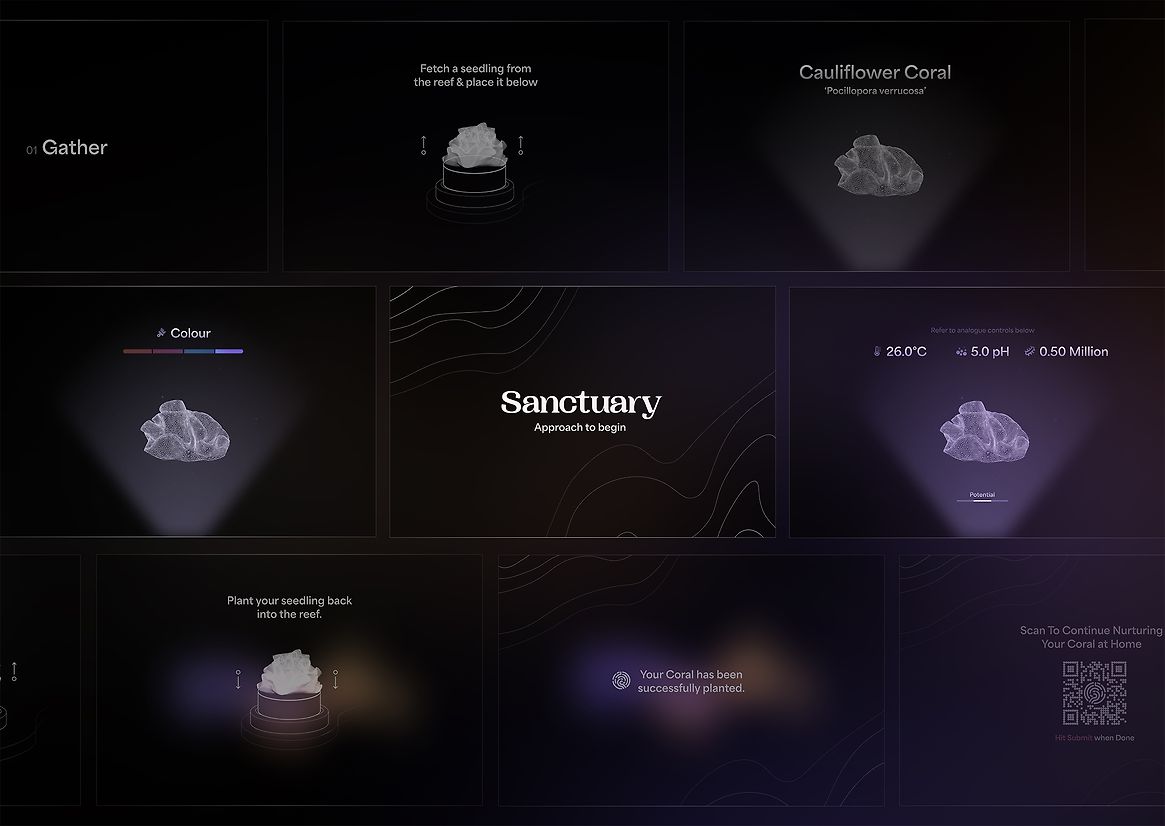
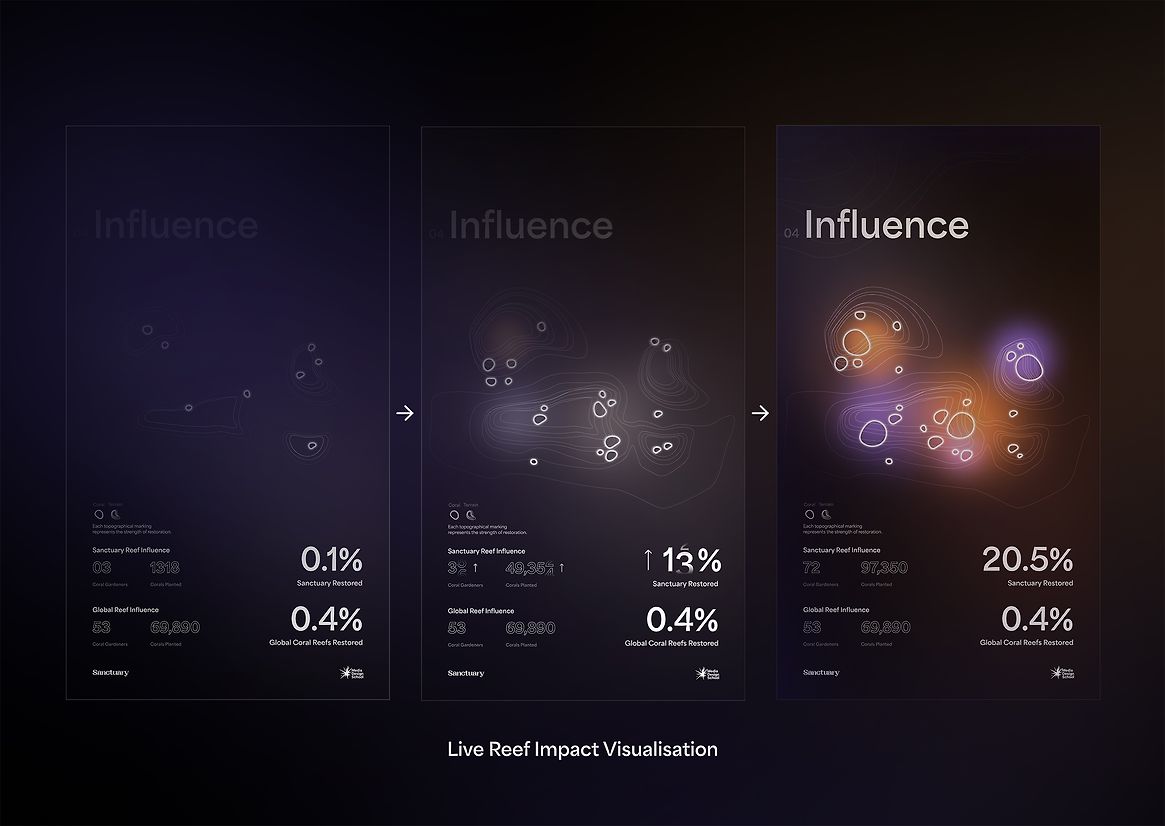
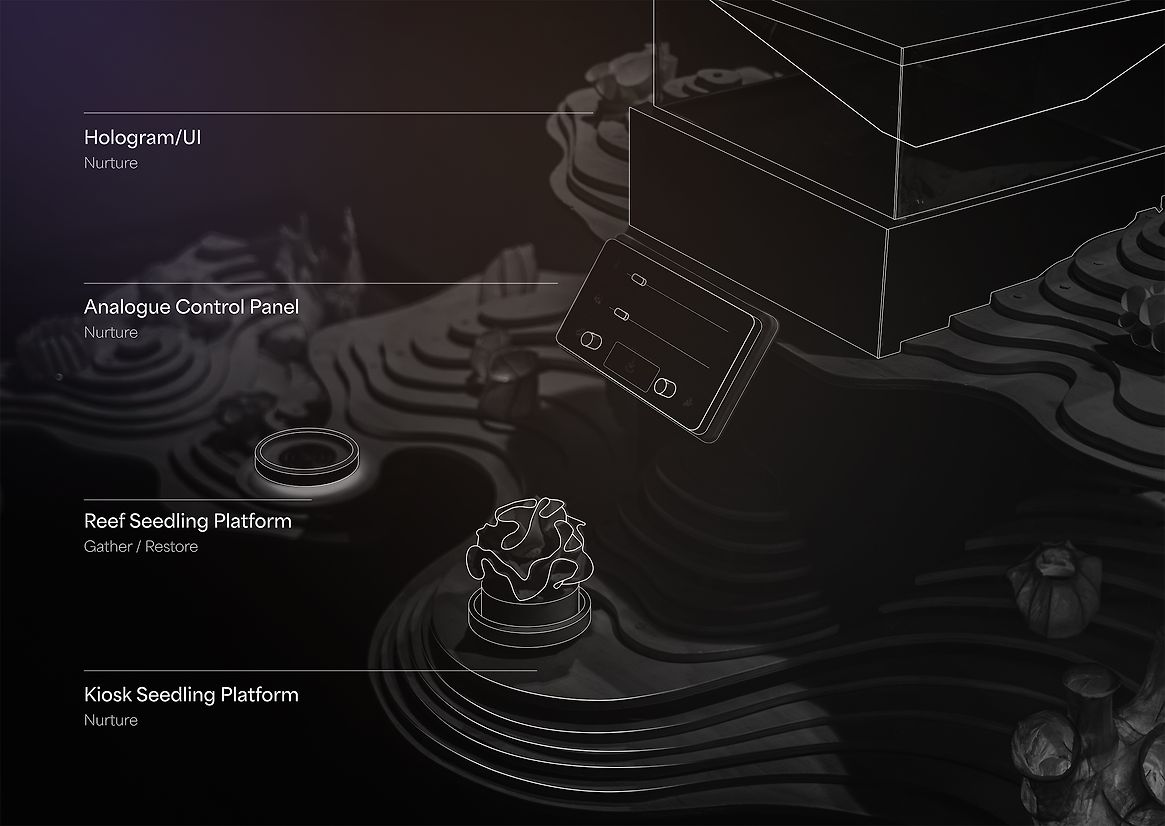
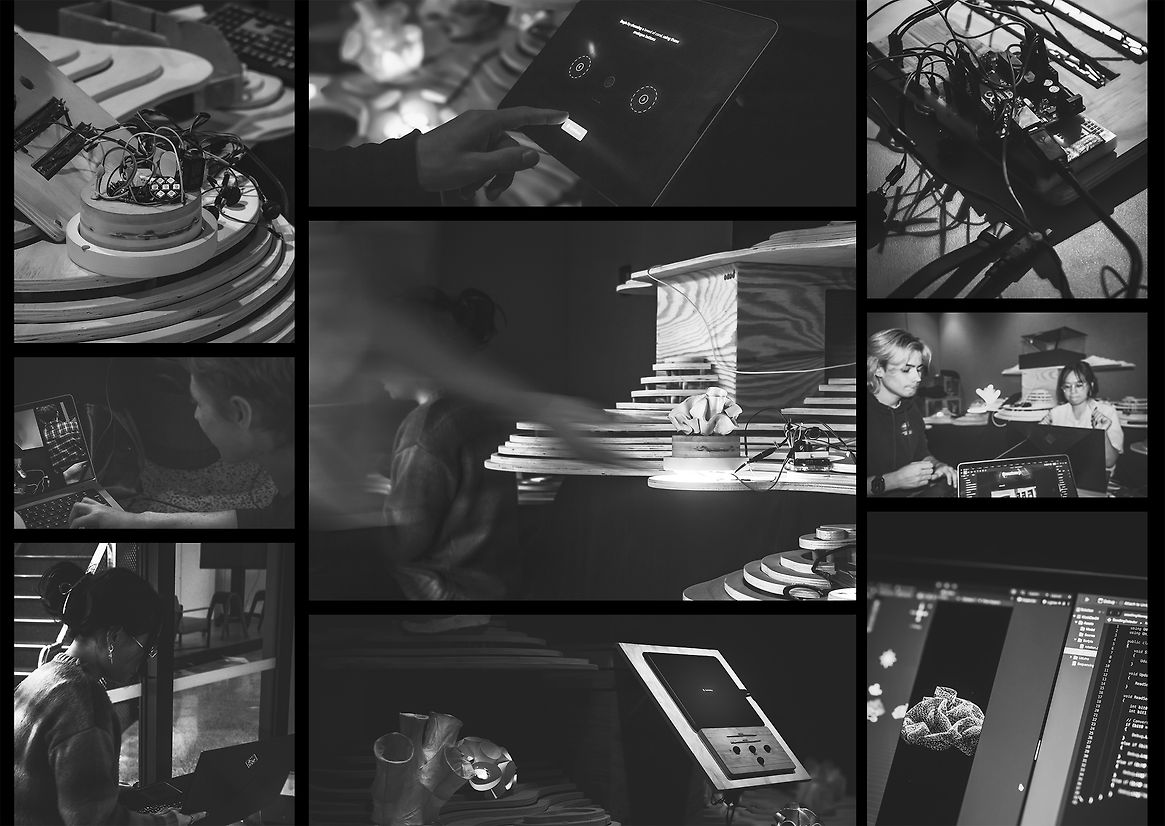
Description:
Coral reefs, supporting 25% of marine life, cover less than 1% of the ocean floor. Sanctuary serves as an experiential installation designed to advocate for coral aquaculture and marine restoration.. Devastated by climate factors and anthropogenic impacts, these ecosystems face a path to recovery through coral aquaculture, addressing the challenges posed by limited data and societal disconnection. While the media often highlights climate change, pollution, and overfishing, it overlooks the complexity of coral reef extinction.
Welcome to the Sanctuary, an experiential installation designed to advocate for coral aquaculture. Sanctuary empowers individuals to become coral gardeners through an immersive, hands-on experience, blending digital and physical elements. This approach educates and inspires action, making coral aquaculture accessible and engaging, particularly for the youth who will pioneer the environment's future.
Sanctuary revolves around four key actions: Gather, Nurture, Restore, Influence. By ‘gathering’’ a dead coral ‘seedling’ and ‘nurturing’ it through interactive elements like a central kiosk and Arduino technology, participants are led to a deeper understanding of coral aquaculture. The design strategy aims to bridge the gap in public awareness about coral reefs, making the preservation of these vital ecosystems both engaging and actionable.
Sanctuary combines cutting-edge technology with thoughtful design to create a multisensory experience. Participants engage with coral seedlings equipped with Arduino Nano and magnetic copper connections, enhancing the tactile aspect of the experience. The installation includes a central kiosk with an analogue control panel that allows users to influence their seedlings' health and environment, reflecting Sanctuary’s aim with its educational and environmental goals, and providing an emotional leverage for users to tunnel vision. Ergonomic and aesthetic considerations are evident in the topographical reef sculpture, designed to enhance user interaction and accessibility.
Sanctuary's potential for replication and scalability enhances its positive societal and environmental impact, encouraging broader conversations about marine restoration and collective efforts to protect our ocean's rainforests. By educating participants about the importance of coral reefs and the urgency of their restoration, the project reconnects individuals with marine conservation, turning them into coral gardeners. This is further enhanced by technological elements like LED rings and dynamic audio feedback, which respond to user interactions during virtual coral restoration. The integration of a web-based digital poster of data visualisation consolidates this information, providing a tangible and eye-catching visual that highlights the impact of the participants and the installation itself.